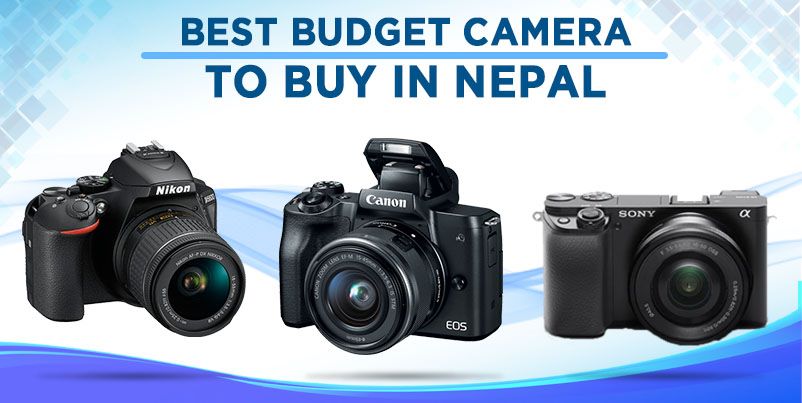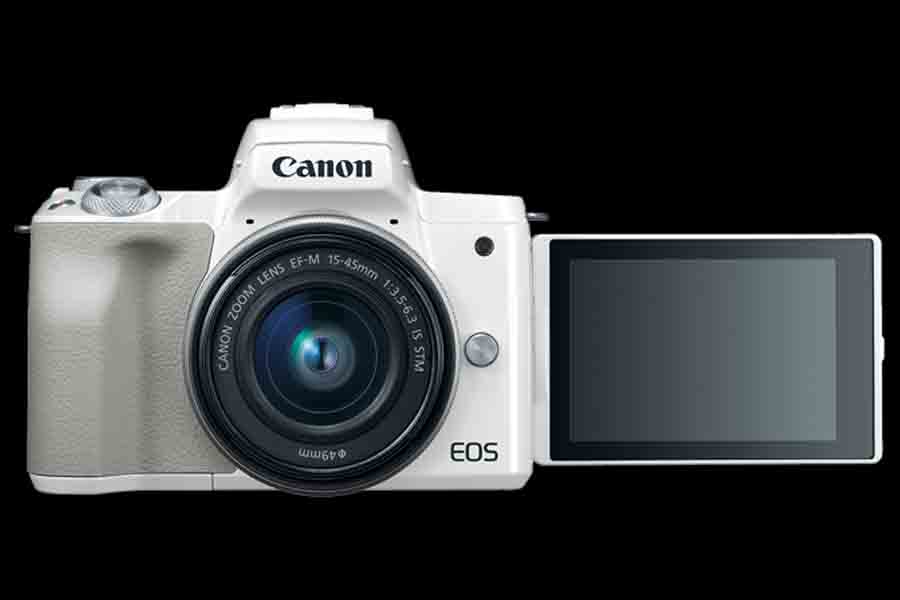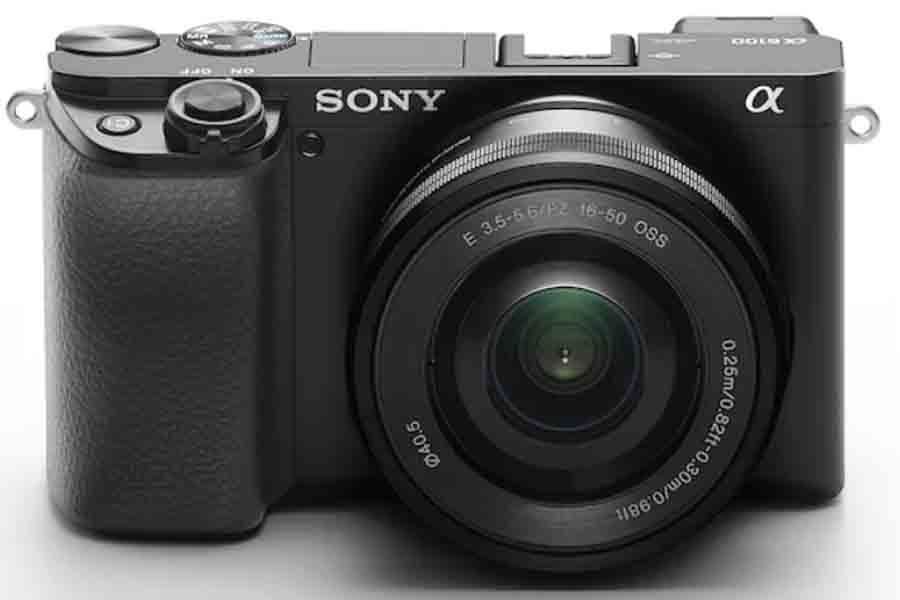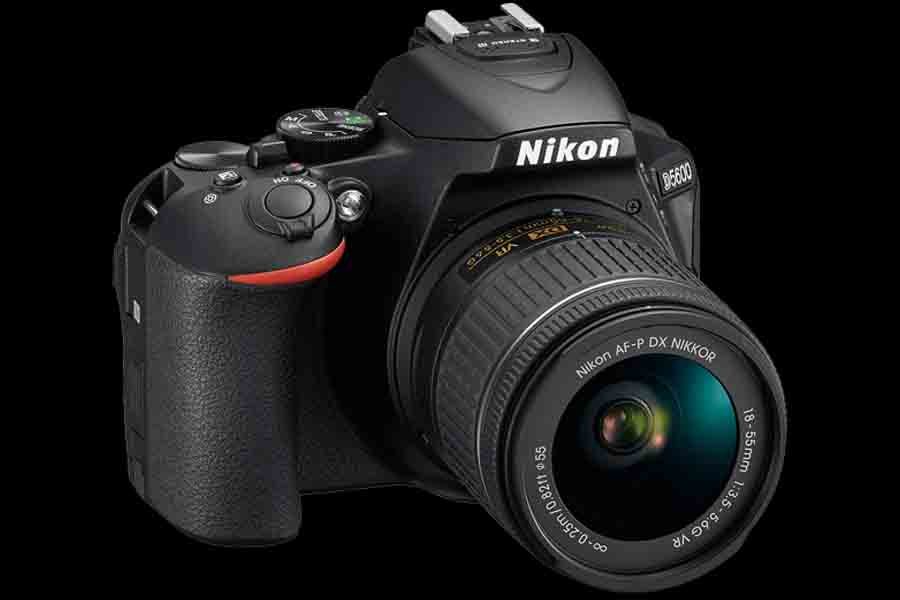
Are you thinking of pursuing a career as a content creator? Do photography and cinematography intrigue you? There are a lot of options in the market and this might even overwhelm you, at times. However, if you are a hobbyist or are starting out, chances are you don’t have a lot of cash to spend. At such you need to find the perfect balance between price and features that you need. To help you out, we have curated a list of the best budget DSLR and Mirrorless cameras that you can buy in Nepal.
There are a lot of things to consider when buying a camera. First of all, you need to clear about what you will be using the camera for. If you are interested in vlogging, you would be better off with a compact and handy camera. You can completely ignore the megapixel factor and pay attention to the resolution and frame rate that the camera can shoot in. Similarly, if you are into photography you will need to take megapixels into account as well. Ask any professional photographer and they will tell you how useless features like built-in flash can be. So keep this in mind, when you choose your next camera.
Best Budget Cameras To Buy in Nepal [Summary 2020]
| Camera Model | Price in Nepal |
| Canon EOS M50 | Rs. 60,000 |
| Sony A6100 | Rs. 65,000 |
| Panasonic Lumix DMX G7 | Rs. 60,000 |
| Canon EOS 750D (Canon Rebel T6i) | Rs. 65,000 |
| Nikon D5600 | Rs. 65,000 |
Canon EOS M50
24MP APS-C CMOS sensor | 4K@24fps / FHD@60fps / HD@120 fps | Articulating touch Screen| 875mAh battery | 387gm
The first camera on our list is the Canon EOS M50. Since it’s a mirrorless camera it is both lightweight and compact compared to DSLRs with a similar set of specs. It uses a 24MP APS-C sensor with a crop factor of 1.6X. This camera can shoot 4K UHD videos at 24fps. Similarly, you can shoot FHD and HD videos at 60fps and 120fps respectively. Shoot in FHD or HD mode and you can make use of the Dual Pixel Auto Focus. Sadly, you will have to rely on Contrast Detection autofocus for 4K video. The articulating touch screen will help you shoot at both high and low angles.

Pros
- Dual Pixel CMOS autofocus
- Articulating Touch Screen
- Compact and lightweight
- Comes with Wi-Fi, NFC, and Bluetooth
Cons
- Not so good battery endurance
- 4K recording has its limitation
- Limited lens choices
Sony A6100
24MP APS-C Exmor sensor | 4k@30fps/FHD@120fps | 180-degree tilting touch screen| 1080mAh battery | 396gm
Sony A6100 is the successor of Sony A6100. It comes with a 24.2MP Exmor CMOS sensor. It’s also an APS-C sensor with a crop factor of 1.5X. It is capable of shooting 4K videos at 30fps, however, you need to shoot at 25fps if you want to utilize the full size of the sensor. It comes with a touchscreen and an EFV (Electronic View Finder). Compared to Canon EOS M50, it offers better Autofocus, better backup and you will have a wide range of lenses to choose from.

Pros
- AI-based Autofocus
- Wide range of lens
- Longer battery life
- Better 4K recording (Full-width 4K recording @ 25FPS)
- Compatible with Imaging Edge Mobile
- Comes with Wi-Fi, NFC, and Bluetooth
Cons
- No articulating Touch-screen
- Low-resolution EVF (1,440,000 dots)
- No USB-C charging
Panasonic Lumix DMC G7
16MP Micro Four Thirds Live MOS sensor | 4k @ 30fps / FHD @ 60fps | Articulating touch screen | 1200mAh battery | 415gm
Panasonic Lumix DMC comes with a 16.8MP sensor. It’s a Micro Four Third camera which makes it twice as small as a full-frame sensor. It is capable of shooting 4K videos at 30fps and FHD videos at 60fps. You can even shoot 4K photos in three different modes. Panasonic’s Depth-Form-Defocus Auto Focus allows continuous autofocus up to 6 fps. It has a bigger 1200mAh battery. It is equipped with an OLED viewfinder and a fully articulating touch LCD panel. However, it is a bit heavier.

Pros
- 4K videos at 30fps
- DFD Auto Focus
- Articulating Touch Panel
- OLED Viewfinder (2,360,000 pixels)
- Bigger Battery
Cons
- Bulky
- Smaller Sensor
Canon EOS 750D (Canon Rebel T6i)
- 24MP APS-C COMS Sensor | FHD @ 30fps | Articulating touch Screen| 1040 mAh battery | 555gms
Canon EOS 750D comes with a 24MP CMOS sensor with a built-in low-pass filter. The image processing is handled by the DIGIC processor. There is no 4K recording. At maximum, you will only be able to shoot FHD videos at 30fps. So, this camera will suit you better if you are more into photography. You will be able to take good pictures out of the camera. But, in case, you need to tweak things, the camera lets you capture 14-bit RAW mages.

Pros
- 14-bit raw images
- Good images straight out of the camera
- Smooth and accurate AF in live mode
- Wi-Fi and NFC connectivity
Cons
- Highest video recording at FHD @ 30fps
- No Image Stabilization
- Average low-light performance
Nikon D5600
24.2MP DX-format CMOS APS-C sensor | FHD @ 60fps| Articulating touch screen| 1230mAh | 670 gms
Nikon D5600 can be a good choice if you are thinking of getting into photography. It comes with a 24.2MP APS-C camera sensor. It is capable of taking 14bit raw photos, which provides many details to work on post-editing. The stereo mic and the articulating screen could come handy if you are into vlogging. Sadly, it doesn’t support 4K recording. It maxes out at Full HD video recording (up to 60fps).

Pros:
- 14-bit raw photos have many details to work in post-editing
- Stereo mic, and articulating screen for vlogging
- Wireless connectivity for Snap bridge app
Cons:
- No 4K recording
- Not recommended for video creators
- Photos straight out of
- Photos may not be best when straight out of the camera
















![Best Ultrabooks To Buy in Nepal 2024 [Updated] Best Ultrabook Laptops in Nepal 2023 - June Update](https://cdn.gadgetbytenepal.com/wp-content/uploads/2023/04/Best-Ultrabook-Laptops-in-Nepal-2023-June-Update.jpg)
![Best Gaming Laptops in Nepal 2024 [Updated] Best Gaming Laptops in Nepal 2023 - June Update](https://cdn.gadgetbytenepal.com/wp-content/uploads/2023/04/Best-Gaming-Laptops-in-Nepal-2023-June-Update.jpg)


![Best Mobile Phones Under Rs. 15,000 in Nepal [Updated] Best Phones Under 15000 in Nepal 2024 Budget Smartphones Cheap Affordable](https://cdn.gadgetbytenepal.com/wp-content/uploads/2024/03/Best-Phones-Under-15000-in-Nepal-2024.jpg)
![Best Mobile Phones Under Rs. 20,000 in Nepal [Updated] Best Mobile Phones Under NPR 20000 in Nepal 2023 Updated Samsung Xiaomi Redmi POCO Realme Narzo Benco](https://cdn.gadgetbytenepal.com/wp-content/uploads/2024/01/Best-Phones-Under-20000-in-Nepal-2024.jpg)
![Best Mobile Phones Under Rs. 30,000 in Nepal [Updated]](https://cdn.gadgetbytenepal.com/wp-content/uploads/2023/12/Best-Phones-Under-30000-in-Nepal-2024.jpg)
![Best Mobile Phones Under Rs. 40,000 in Nepal [Updated] Best Phones Under 40000 in Nepal 2024 Smartphones Mobile Midrange](https://cdn.gadgetbytenepal.com/wp-content/uploads/2024/02/Best-Phones-Under-40000-in-Nepal-2024.jpg)
![Best Mobile Phones Under Rs. 50,000 in Nepal [Updated] Best Phones Under 50000 in Nepal 2024 Smartphones Midrange](https://cdn.gadgetbytenepal.com/wp-content/uploads/2024/02/Best-Phones-Under-50000-in-Nepal-2024.jpg)
![Best Flagship Smartphones To Buy In Nepal [Updated] Best Smartphones in Nepal 2024 Flagship Premium Samsung Apple iPhone Xiaomi OnePlus Honor](https://cdn.gadgetbytenepal.com/wp-content/uploads/2023/09/Best-Smartphones-in-Nepal-2024.jpg)